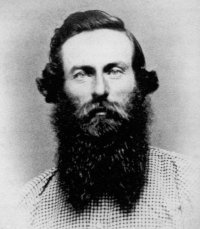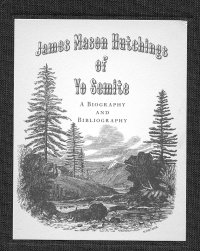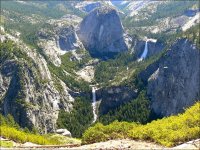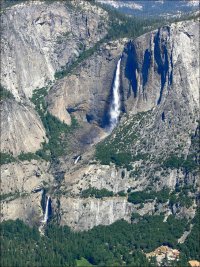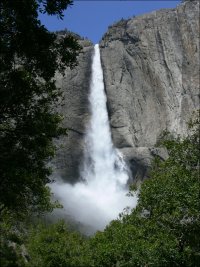James Mason Hutchings, known as the “Father of the Yosemite”, was the first person to publicise and promote what is now the Yosemite National Park in California, USA.
He was born in Towcester in 1820 and died in Yosemite in 1902. At the time of his birth his father was a carpenter; many of the 2,500 population of Towcester were engaged in the coaching business on Watling Street following the improvement of the road five years earlier by Telford.
At the age of eight he was being educated with 32 other boys at Hick’s Charity Free School in Towcester. He moved to Edgbaston, Birmingham at the age of 10, but returned at 16 to be apprenticed to his father. His future life may have been influenced by an exhibition in 1843 in Birmingham of paintings by US artist George Catlin of American Indians and the Wild West.
In 1848 he left Liverpool for America, sailing on the Gertrude to New York and then on to New Orleans, where he heard about the recent discovery of gold in the west. By October 1849 he himself was panning for gold in California, having reached there by sailing up the Mississippi and Missouri to St.Joseph, a rough town at the western frontier of the United States, and then continuing west over land into Indian territory.
In 1853 he wrote a letter sheet “The Miner’s Ten Commandments” which became popular and sold 100,000 copies. This profitable sideline gave him the idea of publishing an illustrated monthly magazine on the natural beauty of California. He spent two years exploring, drawing and photographing during which he found the Yosemite valley which he featured in an article in the first edition of his "Hutchings California Magazine" in July 1856.
He liked the area so much that he lived in the valley from 1864 built a log house hotel and encouraged tourism. He wrote a book "In The Heart of the Sierras" which gave a complete description of the valley and its discovery.
However, from 1864 the federal government was determined to set up the area as a park, without private landowners. James fought eviction for 12 years, but eventually had to leave in 1875. In November 1902 he was showing his third wife, an English woman, the beauties of the Yosemite when one of the horses took fright and bolted, causing him to be thrown out of the carriage. He fractured his skull and died at the roadside.
by
David Wilcock, February 2010, based on the sources listed below.

